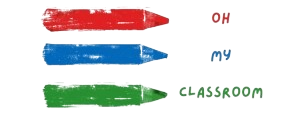Treasure hunts are an exciting and interactive activity that can captivate the imagination of young children.
For 4-year-olds, treasure hunts provide a perfect opportunity to engage their curiosity, problem-solving skills, and physical abilities in a fun-filled adventure.
To help you get started, here are some exciting treasure hunt ideas for 4 year olds, guaranteed to spark their enthusiasm and create unforgettable memories.
Alphabet Treasure Hunt:

This treasure hunt is not only fun but also educational, perfect for 4-year-olds who are learning their ABCs. Create clue cards with each letter of the alphabet and hide them around the designated area. Start with the letter ‘A’ and let the children search for the corresponding clue card. Each clue will lead them to the next letter until they reach the final treasure. Along the way, they’ll practice letter recognition and phonics, making it a great activity for early literacy development.
Nature Scavenger Hunt:

Take the treasure hunt outdoors and encourage your little adventurers to explore nature. Create a list of natural items they need to find, such as a leaf, a pinecone, a feather, or a smooth rock. Provide them with a small basket or bag to collect their treasures. You can also include a few surprise items, like a colorful flower or an interesting insect, to make the hunt even more exciting. This activity not only engages their observational skills but also instills a love for the natural world.
Pirate Treasure Hunt:
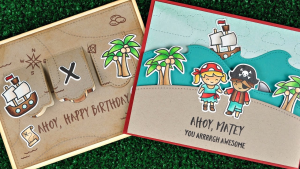
Ahoy, mateys! Transform your backyard into a pirate’s paradise and let the 4-year-olds embark on a swashbuckling adventure. Dress them up as little pirates with eye patches, bandanas, and cardboard swords. Create a treasure map with simple drawings and markings, leading them to hidden treasures. Along the way, set up pirate-themed challenges like walking the plank (a wooden beam on the ground), searching for a hidden key, or solving riddles to find the next clue. The final treasure could be a chest filled with chocolate gold coins or small toys.
Related: 20 Fun Sidewalk Chalk Ideas for Kids
Color Coded Treasure Hunt:
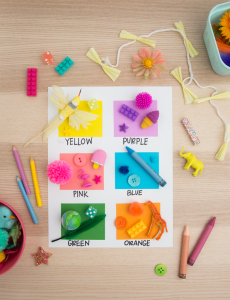
This treasure hunt adds a splash of color to the excitement. Assign each child a specific color and provide them with a set of colored clue cards. Hide the clue cards according to their assigned color around the house or backyard. For example, if a child’s color is red, they will search for red clue cards. Each clue card will lead them to the next until they reach the treasure. This activity helps reinforce color recognition and sorting skills while keeping them engaged in the treasure hunt adventure.
Shape Seekers Treasure Hunt:
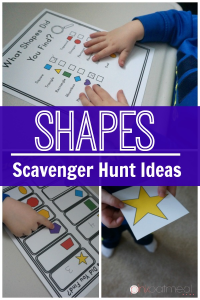
Put your little detectives’ shape recognition skills to the test with a shape-themed treasure hunt. Create clue cards in various shapes like circles, squares, triangles, and stars. Hide the clue cards according to their shapes and let the children search for them. Each clue will lead them to the next shape until they reach the hidden treasure. As they identify and match the shapes, they’ll sharpen their visual perception and critical thinking abilities. This treasure hunt is a playful way to reinforce shape recognition in a hands-on manner.
Gardening Adventure Hunt:

Combine the joy of gardening with a treasure hunt by creating gardening-themed clues. Hide the clues in different spots around the garden or yard, and each clue can provide instructions for a gardening activity or point to a specific plant or flower. As they follow the clues, they can engage in gardening tasks such as planting a seed, watering a plant, or picking a ripe vegetable. The final treasure can be a small gardening tool or a packet of flower seeds, inspiring their love for nature and gardening.
Related: 20 Fun Indoor Ball Activities for Preschoolers
Animal Safari Hunt:
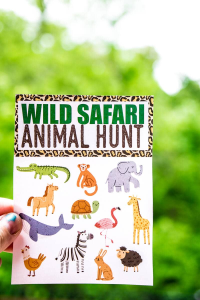
Transform your backyard into a wild safari and let the little explorers embark on an animal-themed treasure hunt. Create clue cards featuring pictures or descriptions of different animals. Hide the clue cards around the area, and each card will lead them to the next animal. For instance, if the clue shows a lion, they should search for the hiding spot near a lion toy or picture. This activity not only stimulates their imagination and observational skills but also introduces them to various animals and their habitats.
Sensory Treasure Hunt:
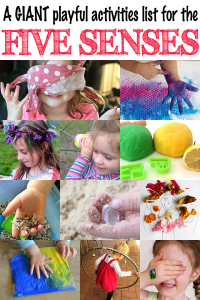
Engage your 4-year-olds’ senses with a sensory treasure hunt. Create clues that lead them to different sensory experiences. For example, a clue might lead them to a bin filled with colored rice, another clue might guide them to a container of scented playdough, and so on. Along the way, they’ll have opportunities to touch, smell, and explore various textures and sensory materials. The final treasure could be a small prize or a sensory surprise like a jar of homemade scented playdough to take home.
Shape Hunt Obstacle Course:
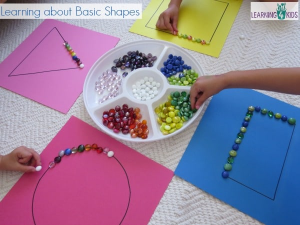
Combine physical activity and shape recognition with a shape hunt obstacle course. Set up different stations around the play area, each representing a specific shape, such as a circle, square, triangle, or rectangle. The children will navigate through the course, completing shape-related tasks at each station. For example, they might need to jump over circular hoops, crawl under square tunnels, or balance on triangle-shaped stepping stones. At the end of the course, they’ll discover the hidden treasure, rewarding their efforts with a sense of accomplishment.
Time Capsule Treasure Hunt:
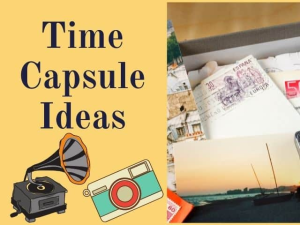
Create a time capsule treasure hunt that allows 4-year-olds to capture memories of the present and uncover them in the future. Provide each child with a small box or container to decorate and fill with meaningful items. Hide the time capsules around the area, and each child will need to follow clues to find their specific time capsule. Inside the time capsule, they can include drawings, photos, or written notes about their favorite things, dreams, or aspirations. This activity encourages self-expression, creativity, and the concept of time as they wait to rediscover their time capsules years later.
Shape Shadow Hunt:
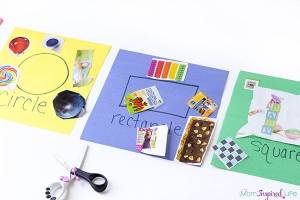
Enhance shape recognition skills and engage their imagination with a shape shadow hunt. Cut out shapes from colored paper and attach them to a stick or dowel. Hide the shapes around the play area, and as the children find each shape, they’ll hold it up and observe its shadow on the ground or wall. They can then match the shadow shape to a corresponding shape card or puzzle piece to reveal the next hiding spot. This activity promotes shape recognition, observation skills, and creativity.
Puzzle Piece Hunt:
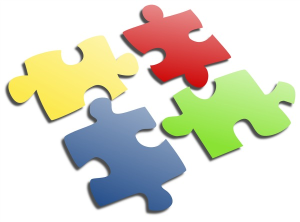
Combine the excitement of a treasure hunt with the challenge of completing a puzzle. Before the treasure hunt, disassemble a simple puzzle and hide the pieces around the area. Create clues that lead the children to the hiding spots of the puzzle pieces. As they find the pieces and put the puzzle together, they’ll gradually reveal the final treasure. This activity promotes problem-solving skills, spatial awareness, and patience while adding an extra layer of excitement to the treasure hunt experience.
Musical Treasure Hunt:
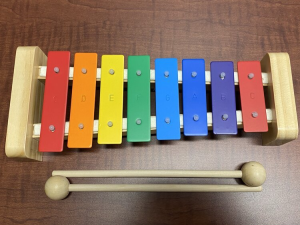
Incorporate music and movement into the treasure hunt with a musical twist. Set up different stations with musical instruments or objects that make a sound. Hide clue cards at each station, and when the music starts playing, the children move from one station to another, following the clues and collecting them along the way. The final clue leads them to the treasure location. This activity encourages listening skills, coordination, and a sense of rhythm while keeping the participants engaged and active.
Science Discovery Hunt:

Turn the treasure hunt into a scientific exploration by incorporating science-themed clues and challenges. Hide clues that lead the children to different scientific objects or experiments. For instance, a clue might lead them to a magnifying glass hidden in the garden or a jar filled with colorful water and oil in the kitchen. At each discovery, they can engage in simple experiments or observations before moving on to the next clue. The final treasure can be a science-themed book or a small science kit, fostering a love for learning and discovery.
Community Helpers Treasure Hunt:
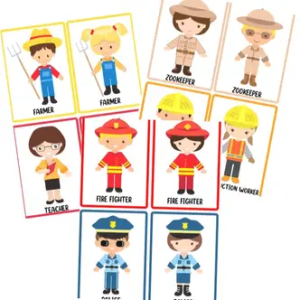
Teach 4-year-olds about various community helpers while they search for hidden treasures. Create clue cards that depict different community helpers, such as firefighters, doctors, or police officers. Hide the clue cards in different locations, and as the children find each card, discuss the role and importance of that community helper. This activity not only encourages awareness of community helpers but also promotes social skills and appreciation for those who help our society. The final treasure can be a “community helper” dress-up set or a thank-you card-making kit to show gratitude to community helpers.
Healthy Snack Hunt:

Promote healthy eating habits while having fun with a healthy snack treasure hunt. Create clues that lead the children to different healthy snack options hidden around the house or kitchen. For example, a clue might lead them to a spot where they can find a piece of fruit or a container of yogurt. As they follow the clues and collect the snacks, they’ll learn about nutritious foods and the importance of making healthy choices. The final treasure can be a small recipe book or a personalized reusable water bottle.
Shape Sorting Hunt:

Help 4-year-olds reinforce their shape recognition skills with a shape sorting treasure hunt. Hide objects or cards with different shapes around the play area. Each object or card represents a specific shape, such as a circle, square, triangle, or rectangle. Provide the children with a sorting basket or box and task them with finding and collecting objects that match each shape. This activity promotes shape recognition, sorting abilities, and fine motor skills as they manipulate and place objects into the sorting container.
Artistic Masterpiece Hunt:
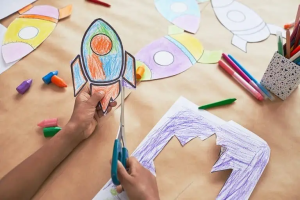
Let your little artists unleash their creativity with an artistic masterpiece treasure hunt. Hide various art supplies, such as paintbrushes, colored pencils, or stickers, around the play area. Each hidden item comes with a clue that leads them to the next art supply. Once they collect all the supplies, they can use them to create their own artistic masterpiece. Encourage them to paint, draw, or craft their artwork, fostering self-expression, imagination, and artistic skills.
Musical Instrument Hunt:
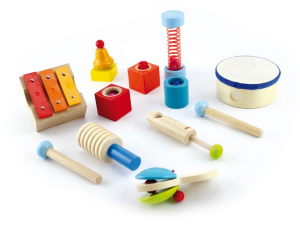
Introduce the world of music to 4-year-olds through a musical instrument treasure hunt. Hide miniature versions or pictures of different musical instruments around the house or outdoor area. Each instrument represents a clue that leads them to the next hiding spot. Along the way, you can play short samples of the instruments’ sounds to help them identify and make connections. The final treasure can be a small musical instrument or a CD of children’s music, inspiring their interest in music and rhythm.
Around the World Adventure Hunt:
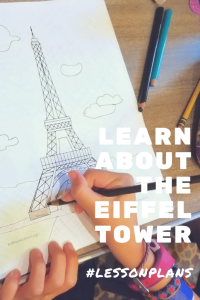
Take the children on an exciting adventure around the world with an international-themed treasure hunt. Create clues that represent different countries or landmarks, such as the Eiffel Tower for France or a sombrero for Mexico. Hide the clues in various locations, and as the children find each clue, they’ll learn about a different country or culture. You can provide additional activities or facts about each country to enhance the learning experience. The final treasure can be a small globe or a passport-style booklet with stickers representing the countries they explored.
